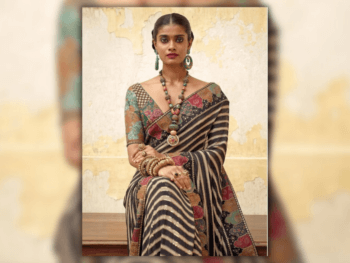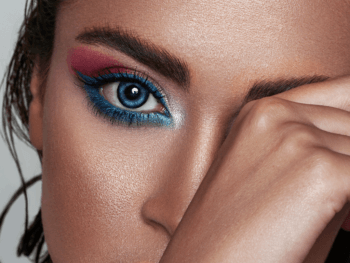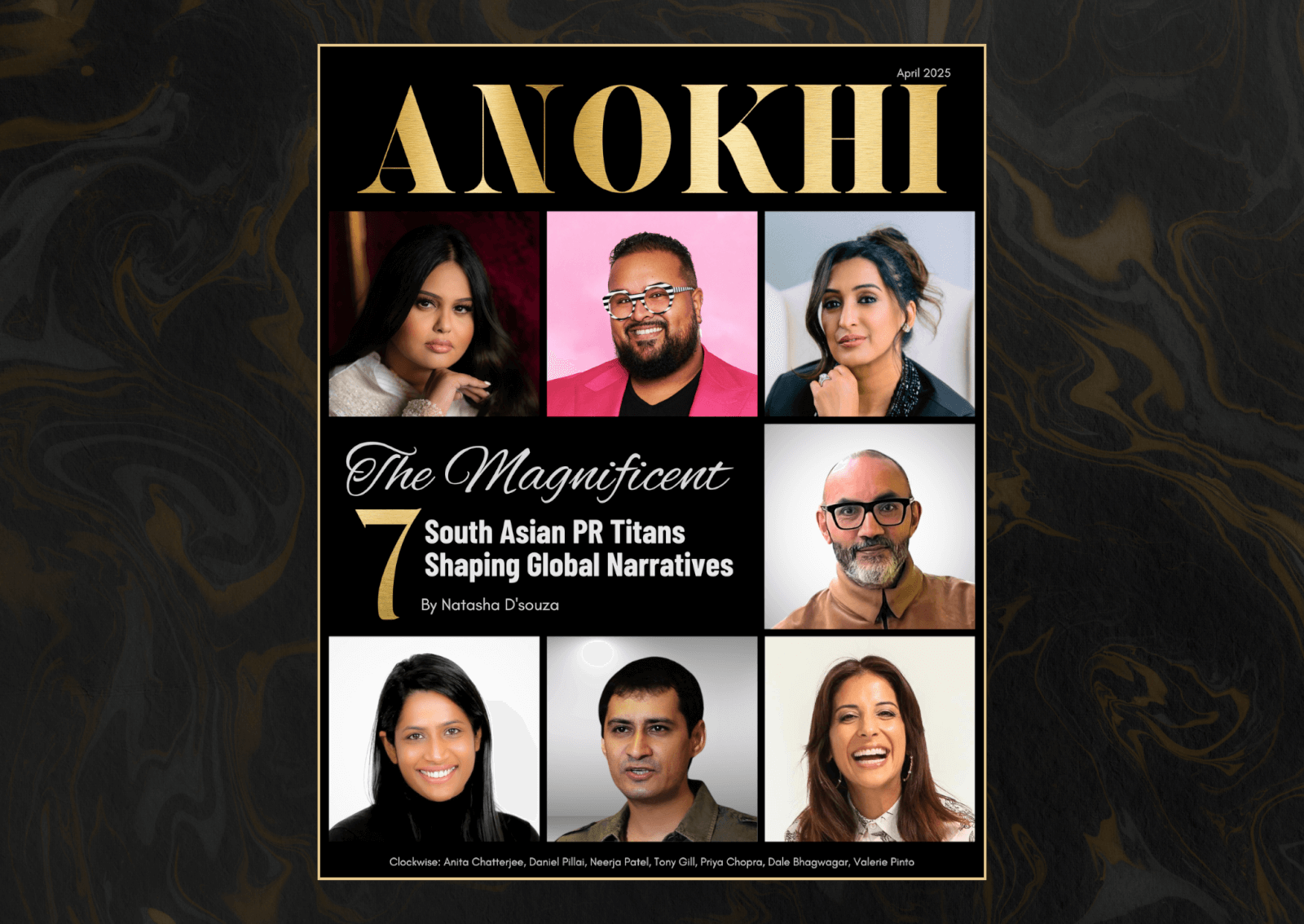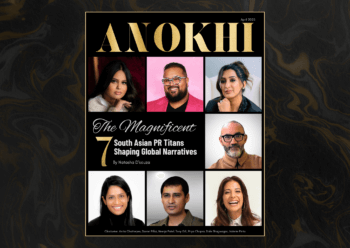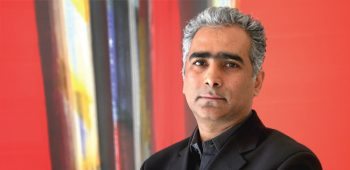
Contemporary Indian art, made in the last century and today, is a hot commodity.
Collectors, both in India and in the West, are snapping up works by artists such as M.F. Husain, S.H. Raza and Tyeb Mehta. Today, it is not uncommon to see paintings by these heavyweights fetch upwards of a million dollars. Even more impressive, at the annual student show at Mumbai’s Jahangir Art Gallery, works by newcomers are selling at Rs 20,000 to 50,000 (USD $500 to $1300).
Forbes Asia estimates that the market for South Asian art is worth one billion dollars U.S. and should keep growing as wealth in the region increases. In fact, many people are now buying art, not just for looks, but as an investment. In the past few years, galleries and banks have created at least six art funds that invest in paintings instead of stocks and bonds. Mumbai’s Economic Times even publishes an Art Index in partnership with Osian’s auction house that tracks the value of works by 51 top Indian artists.
If there’s one man who can make sense of it all it is Sundaram Tagore–owner of the eponymous art gallery in Manhattan and the unofficial ambassador of Indian art in the West.
Tagore, a great-nephew of Nobel laureate Rabindranath Tagore, is a former director of New York’s Pace Wildenstein Gallery and advisor for major galleries such as Venice’s Peggy Guggenheim Collection, New York’s Metropolitan Museum of Art and New Delhi’s National Gallery of Modern Art.
Tagore’s gallery represents artists who examine the exchange of ideas between cultures such as renowned Japanese artist Hiroshi Senju, who is currently installing an almost three kilometre-long work in a Tokyo subway station; Yogi and painter Sohan Qadri, known for abstract work with spiritual themes, and the Washington D.C.-based Anil Revri, who was the first Indian artist with a retrospective show at a high profile museum in the U.S. Tagore’s gallery also hosts cultural programming–poetry readings, dance recitals and film screenings–and publishes art books on Indian modernism, 19th century photography and architecture.
ANOKHI asked Tagore for a crash course on Indian contemporary art and below are the lesson highlights.

ARTIST SOHAN QADRI
Why is Indian art so popular? and who is buying the art?
As the emerging economies in China and India keep getting stronger, they are creating billion-dollar fortunes–Mittal, Ambani etc. Acquiring art and becoming an art patron has become a social activity. In the elite context in India, everyone is buying art and there is lot of activity and energy. There’s also a lot of interest in Indian art outside of India, in the West, in Dubai, in Hong Kong.
Who are the major artists?
In the past three or four years, the Bombay Progressives (an influential group formed by Francis Newton Souza, S.H. Raza and M.F. Husain in post-Independence India) have had most interest. Prior to that, the interest was focused on the Nationalists (early 20th century Bengali artists such as Raji Ravi Varma, Abanindranath and Gaganendranath Tagore). Now younger artists, including Diaspora artists and those who focus on more abstract themes, are also gaining some attention.
There was also initially a greater demand for antiquities, such as lithographs and prints made from steel engravings by the European artists who worked in India such as Thomas and William Daniell, J. B. Fraser and (William)Hodges. Also, there’s a big rise in interest in the serious photographers: Dayanita Singh, Prabuddha Dasgupta and Raghubir Singh.
How can a beginning collector learn to buy art?
Eyes are like muscles–the more you use them the stronger they become. Avoid buzzwords and a herd mentality. Go to local museums and galleries. Develop serious relationships; find a trusted advisor to guide you through the process. Use the web and read magazines (Art in America, ArtAsia Pacific, ARTnews) to pick up the language and develop your sense. Take appreciation courses at your local university. Learn to recognize serious art. Anyone can wield a brush; can the artist wield the brush that can transform the viewer?
What should you buy?
Buy art that makes you react, not to match your décor. For about $500, you could buy work from student shows or Bollywood posters.
Indian Art-Hunting in NYC
Manhattan is a Mecca for contemporary South Asian art with the largest concentration of galleries focused on desi artists outside of India. Check out the following venues to get a sense of the vibe:
Aicon Gallery – 206 Fifth Avenue, 5th Floor,
212.725.6092, aicongallery.com
Contemporary Indian art by major artists; also has locations in Palo Alto, California and London, England and runs two private equity funds that invest in contemporary Indian art.
Bose Pacia – 508 West 26 Street, 11th Floor,
212.989.7074, bosepacia.com
South Asian avant-garde; also has a branch in Kolkata.
Sepia International – 148 West 24 Street, 11th Floor,
212.645.9444, sepia.org
Contemporary photography; also houses the Alkazi Collection of 19th and early 20th century South Asian photographs.
Sundaram Tagore Gallery – 547 West 27 Street,
212.677.4520, sundaramtagore.com
Contemporary artists interested in cross-cultural exchange; also has galleries in Beverly Hills and Hong Kong.
Talwar Gallery – 108 East 16 Street, 212.673.3096,
talwargallery.com
Contemporary Indian art; also has a location in Delhi.
Tamarind Art Gallery – 142 East 39 Street,
212.990.9000, tamarindart.com
Contemporary Indian art by major and emerging artists.
Cheat Sheet: Major Indian artists
Nationalists (also known as Bengal School of Art): active in the early 20th century and associated with Indian nationalism.
Abanindranath Tagore: leading exponent of the school and nephew of Rabindranath; known for a series of works on Krishna in a Mughal-influenced style.
INTERVIEW RITIKA NANDKEOLYAR



















































